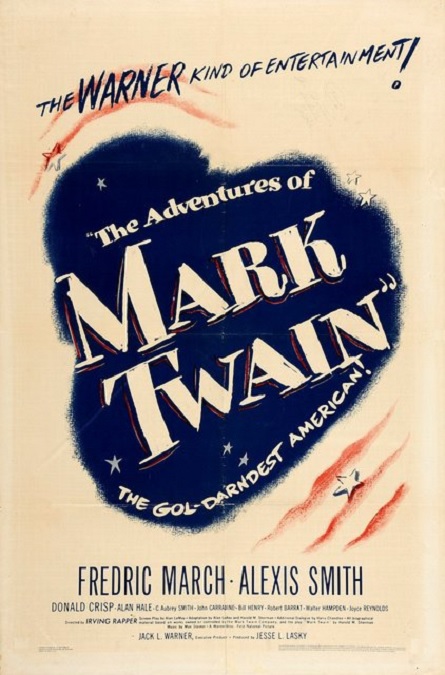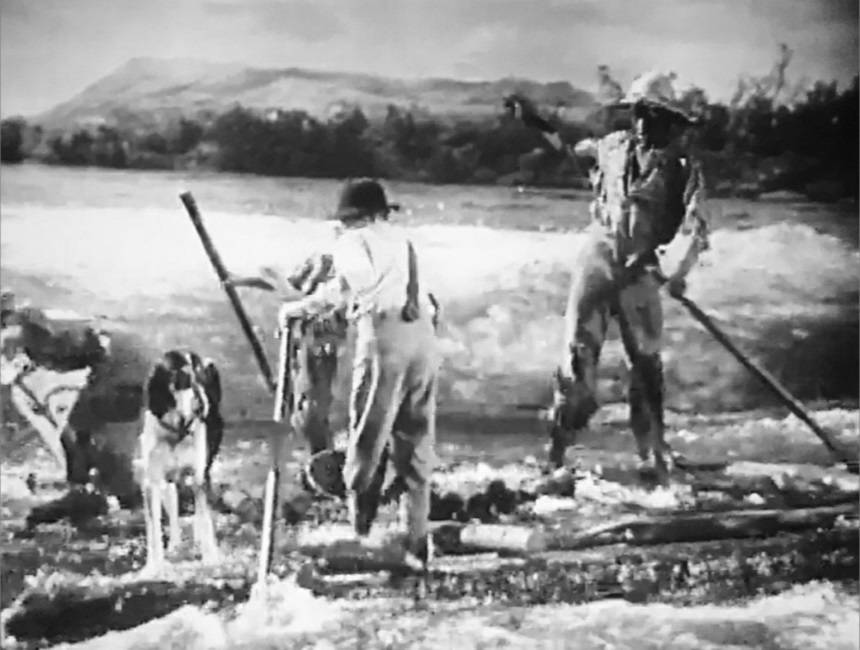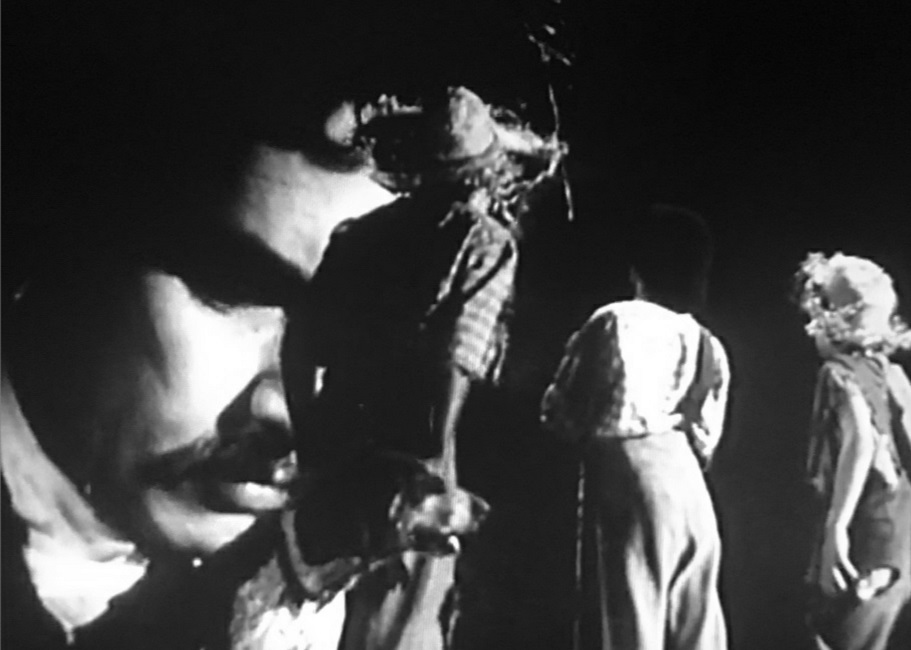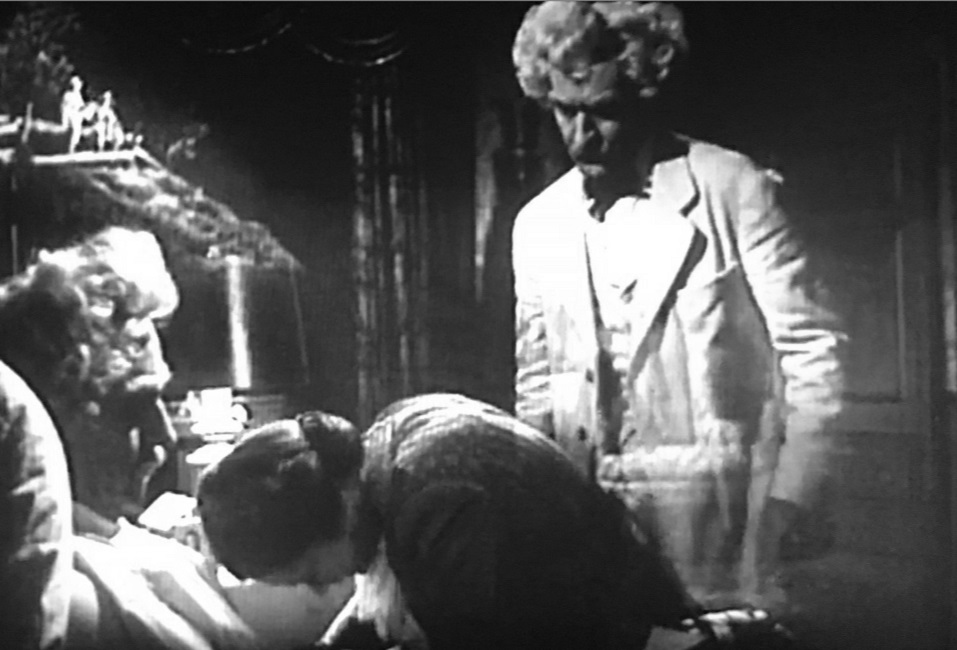



The Adventures of Mark Twain – 1944

At least this wasn’t another war propaganda film! It seemed that was all they were making in the 1940s. Special effects from the era seemed to be an endless barrage of stunt flying, naval battles, and explosions. But here, we are treated to a biopic of one of the most beloved American authors of the nineteenth century.
Now, that being said, we have another case of a movie with very little to speak of in the way of special effects. We have the standard store of rear-projection shots, sea water flowing by in the background and the like, and a couple composite shots that were cleverly constructed. There were a number of layered image montages to show the passage of time, or panning across a globe to depict travel to different locations. But on the whole, there just weren’t many visually interesting or innovative special effects.
There were a few sequences that stood out, but just barely. For example, near the beginning of the film, there is a shot of Tom Sawyer, Huckleberry Finn, Jim, and young Samuel Clemens himself, on a raft, struggling in the wake of a great steamboat. The shoddy raft breaks apart in the rough waters and the boys fall into the water. The steamboat appeared to be a scale model in these shots, and I’ll admit that they were pretty convincing.
And then there was another interesting sequence in the film, when an exhausted Twain dreams that miniature versions of some of his characters are walking on his desk, and reading his unfinished manuscript. But even here, the effect had been done before, and there was nothing that looked too difficult for 1943 filmmakers.
And finally, there was the ending sequence in which Twain dies. Through the use of selective lighting, images of Tom Sawyer and Huck Finn appear behind the author’s death bed to lead his ghost into a glorious sunset. It was a clever composite shot that combined several images that appeared in stages, as the deceased Twain and his grieving daughter fade into mist. As the trio walk away from the camera, I think the actors are seamlessly replaced with animated figures who disappear over a distant hill, though I could be mistaken about this one.
There were a couple of other noteworthy effects. For example, according to an article by Frank Miller on the TMC website, “The special effects department also aided in the dramatization of Twain’s story, ‘The Celebrated Jumping Frog of Calaveras County,’ and created animated versions of Tom Sawyer and Huckleberry Finn, all of which helped the film score an Oscar nomination for Best Special Effects.” But I also suspect that the makeup that, over the course of the movie, aged Frederick March seventy-five years may have been a factor, as Best Makeup didn’t officially become a category until 1981.